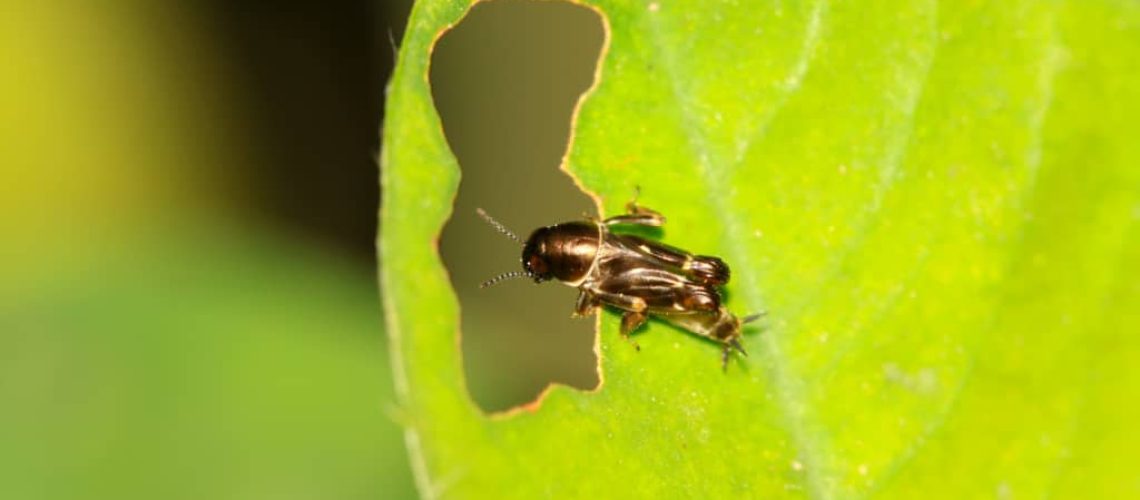Florida is home to picturesque attractions, from awe-inspiring beaches to gorgeous homes with pristine and well-manicured lawns. However, if you are a homeowner, you will know the challenges associated with maintaining a lawn. As much as you want your lawn to look lush, insects can invade your lawn and feast on your plants. Pests are common in Florida lawns. The good news is that you can do something to deal with them. Lawn care when your green turf has been invaded by bugs, insects, worms, and other types of pests can be easy. The first step to dealing with pests is to understand the kind of bugs that usually infest Florida lawns.
Grub Worms
You can find more than 100 species of grub worms in America. They are common in Florida lawns, and when ignored, they can do serious damage to your lawn. Grub worms resemble beetle larvae. The common grub worms found in Florida lawn is called Scarab beetles. They are known as immature May beetles or June bugs. Other types of grub worms include Green June beetles and Japanese beetles.
The beetle larvae are referred to as the white grub worms because of their shape and light color. Most grub worms regardless of their type, have a brown head and white body. They only have three pairs of legs, which they use for walking and burrowing. Unlike a true worm, grub worms do not crawl. Grass plants are killed because of the feeding activity of grub worms. You will know that grub worms have infested your lawn if you see some dead or dying patches.
Summer is the hatching season of grub worms as this is the time when lawns are well-established. For grub worms that hatch during fall, they can burrow under the surface and hibernate for the winter. They can go as deep as 5 feet. The grub worms are not visible on the surface of the soil. The damage often takes place at the root level. The most common sign of grub worm presence is the large patch of yellowing or brown lawn. This is an indicator that your vegetation is about to decay or die. Professional lawn care is required in getting rid of grub worms. Homeowners will not be able to detect the presence and activity of these worms because they are under the soil.
Mole Crickets
Another dangerous and invasive lawn pests that homeowners need to watch out for is the mole cricket. Regardless of the grass species you have, the mole cricket can devour them which makes them damaging to Florida lawns. The mole cricket has subspecies, but they did not originate from the United States. All mole species can survive above and below ground. They do not have dormant phase so you should expect them to be active throughout the year.
The adult mole crickets lay eggs in the spring. The eggs are found underneath the soil. Mole crickets are also known to be nocturnal. They are not visible during the day. Mole crickets prefer grass leaves and roots. You can identify the presence of mole crickets if there are patches of dead or dying grass on some parts of your lawn. If the tunnel entrances have mounds of soil or dirt, they are also indicators that mole crickets have invaded your lawn.
Chinch Bugs
Chinch bugs are a common pest in America, and they can be found in Southwest Florida. It particularly attacks St. Augustine grass. These lawn pests are tiny insects, but they can cause serious damage to lawns where St.Augustine grass grows. The damage caused by chinch bugs to Florida lawns every year has been estimated to reach millions of dollars. Chinch bugs tend to survive the cool weather. Florida’s neutral weather cause their colonies to thrive despite seasonal changes. Chinch bugs have infested your lawn if you see patches of discolored grass in your lawn. These patches are usually circular. The areas that have been infected also look yellowish-brown. The damage occurs at water-stressed regions and lawn edges.
Sod Webworms
The sod webworms are also known as the tropical sod webworms because they are considered as a warm-weather pest. The number of sod webworms multiplies in the fall. There is a decline in their population when the winter comes. Sod webworms could have attacked your lawn if you see the insects themselves. Unlike other lawn pests, sod webworms will appear on the surface of the soil. They can infest any grass species but do not completely kill the grass plant as they prefer fresh shoots.
When dealing with these lawn pests, calling a lawn care professional to consider insect eradication will make sure that existing pests will be gone for good. Lawn pests can be invasive and may even take hold if you use the wrong combination of sprays and insecticides. You can prevent further damage when you let a lawn care professional get rid of pests.

